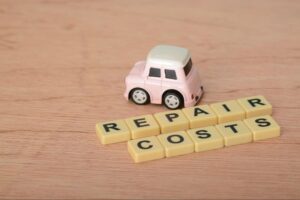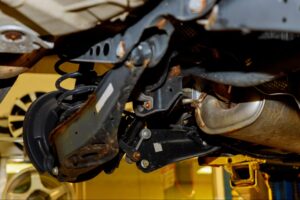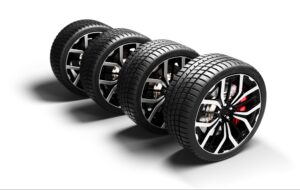
How Long Do Brake Pads Last?
Brake pads are essential to your vehicle’s ability to stop safely. As one of the most frequently replaced components in a car’s braking system, they play a key role in keeping you and your passengers secure on the road. Still, many drivers are unsure of precisely how long brake pads last or what signs to look for when it’s time for replacement. While there’s no one-size-fits-all answer, understanding the general lifespan of brake pads and the factors that influence their wear can help you plan and avoid costly repairs.
The Average Lifespan of Brake Pads
Most brake pads last between 30,000 and 70,000 miles, but that range can vary significantly depending on your driving habits, the type of vehicle you own, and the environment in which you drive. Some brake pads may need to be replaced as early as 25,000 miles, while others can last up to 100,000 miles with careful driving and consistent maintenance. Your owner’s manual may offer general guidance, but regular inspections remain the most accurate way to determine when it’s time to replace your pads.
Driving Habits That Affect Brake Pad Wear
Your daily driving habits have a significant impact on the lifespan of your brake pads. If you tend to drive aggressively—frequently slamming on the brakes, tailgating, or stopping abruptly—your brake pads will wear down much faster. Conversely, if you drive calmly and use techniques like coasting to reduce speed before braking, you’ll extend the life of your brake components. Driving in hilly or mountainous areas, or stop-and-go traffic, also contributes to faster wear regardless of your braking style.
Different Types of Brake Pads and Their Durability
Brake pads are made from various materials, each offering unique benefits and drawbacks in terms of longevity, noise, and performance. Understanding these types can help you select the most suitable option for your driving needs and budget.
Organic Brake Pads
Made from materials such as rubber, resin, and glass, organic brake pads offer quiet performance but tend to wear out more quickly than other types.
Semi-Metallic Brake Pads
Constructed from a blend of metals and synthetic compounds, these pads deliver strong stopping power and durability, though they can be noisy and wear down rotors more quickly.
Ceramic Brake Pads
Known for their long lifespan and minimal dust production, ceramic brake pads are quieter and more durable but come with a higher price tag.
The Impact of Vehicle Type and Weight on Brake Pads
Larger and heavier vehicles typically place greater strain on their braking systems, causing brake pads to wear out more quickly. Trucks, SUVs, and vehicles used for towing typically wear out brake pads more quickly than lightweight sedans or compact cars. Performance vehicles that demand more frequent or aggressive braking will also experience faster wear. It’s essential to consider your vehicle’s size and function when estimating brake pad lifespan and scheduling regular maintenance checks.
How Environmental Conditions and Driving Terrain Affect Brake Pads
Where and how you drive play a big role in brake pad longevity. Urban environments often require frequent stops at traffic lights and navigating congested traffic, which can wear down pads more quickly. Drivers in rural areas or on highways may enjoy extended brake life due to more consistent speeds and less stop-and-go driving. Additionally, driving in extreme heat, cold, or wet conditions can affect pad performance and accelerate wear. Dusty or sandy roads can also contribute to early deterioration.

Signs That Your Brake Pads Are Wearing Out
As brake pads wear down, your vehicle will often give you clear warning signals. Recognizing these signs early can help you avoid costly repairs and maintain safe driving conditions.
Squealing or Screeching Noises
A high-pitched noise when braking is usually caused by built-in wear indicators that signal your pads are getting too thin.
Grinding Sounds
If you hear grinding, it likely means the brake pad material has worn away and metal is now contacting metal, which can damage the rotors.
Reduced Braking Responsiveness
A noticeable delay in stopping can indicate worn pads that are no longer providing adequate friction.
Vibrating Brake Pedal
Shaking or pulsing when braking could suggest uneven pad wear or warped rotors.
Brake Warning Light
Many modern vehicles include sensors that activate a dashboard warning when brake pads are due for replacement.
Vehicle Pulls to One Side
Uneven pad wear or a stuck caliper can cause your car to drift to one side while braking.
Consequences of Ignoring Worn Brake Pads
Delaying brake pad replacement doesn’t just affect your stopping power—it can result in serious damage to your entire braking system. When pads wear down excessively, the metal backing plate can begin to grind against the rotor, causing scoring and warping. This kind of damage requires rotor resurfacing or full replacement, which is significantly more expensive than simply replacing brake pads. Over time, the added stress can also damage the calipers, leading to complete brake failure if left unaddressed.
How to Check the Condition of Your Brake Pads
While professional inspections are always recommended, there are simple ways to monitor your brake pads at home. Inspect your wheels to check the pad thickness—if the friction material is less than a quarter of an inch, it’s likely time for replacement. Many newer vehicles also have electronic wear sensors that trigger a dashboard alert when pads are low. For those without sensors, listening for squeaking or grinding, and paying attention to braking performance, can help you catch wear early.
How Often Should You Inspect Your Brake Pads?
As a general guideline, brake pads should be inspected at least every 10,000 to 15,000 miles, or during routine tire rotations and oil changes. Some mechanics check your brake condition as part of a multi-point inspection, but it’s worth requesting a dedicated brake evaluation if you’re unsure about the condition of your brakes. Even if your pads are still in good condition, regular checkups can alert you to uneven wear, stuck calipers, or problems with the rotors before they become major issues.
How Much Does it Cost to Replace Brake Pads?
The cost of brake pad replacement varies depending on your vehicle type, the pad material, and your location. On average, expect to pay between $150 and $300 per axle for standard brake pad replacement. Ceramic pads or performance-grade materials can increase that cost. If your rotors also need resurfacing or replacement, total costs may rise to $400–$600 or more. While it may be tempting to delay this expense, catching brake wear early can save hundreds of dollars in long-term damage.
Replacing Brake Pads: DIY or Professional?
Some experienced car owners with the right tools can replace brake pads at home, but for most drivers, professional service is the safest and most reliable option. Improper installation can compromise braking performance and lead to uneven wear or damage to the rotors. A trained technician will not only install the pads correctly but also check for rotor thickness, caliper function, brake fluid condition, and overall system health. If you’re unsure about doing it yourself, it’s worth investing in professional support.
Should You Replace All Four Brake Pads at Once?
Brake pads typically wear evenly on each axle, so it’s standard to replace either the front two or the rear two at the same time. You don’t necessarily need to replace all four unless they’ve all reached the end of their lifespan. Front brake pads usually wear out faster than rear ones, since they handle a greater share of braking force. A mechanic will measure pad thickness on each wheel and make recommendations based on wear patterns and driving behavior.
How to Make Your Brake Pads Last Longer
With a few simple habits and routine maintenance, you can extend the lifespan of your brake pads and reduce wear on your overall braking system. These tips can help you maximize the benefits of every set.
Avoid Hard Braking
Brake gradually instead of slamming on the brakes to reduce friction and heat buildup.
Maintain a Safe Following Distance
Staying back from other vehicles helps you brake more smoothly and less often.
Reduce Vehicle Weight
Carrying unnecessary cargo adds strain to your brakes and shortens pad life.
Use Engine Braking
Downshifting or coasting when driving downhill can reduce reliance on your brakes.
Check Brake Fluid Regularly
Clean, properly filled brake fluid supports consistent braking performance and prevents excessive wear.
Making the Most of Your Brake Pads Through Smart Maintenance
Brake pads may not be the most glamorous component of your vehicle, but they’re among the most important. Their lifespan varies depending on several factors, including how and where you drive, the materials they’re made from, and your vehicle’s overall weight and use. By staying alert to warning signs, regularly inspecting your brakes, and practicing good driving habits, you can help ensure that your brake pads last as long as possible. Timely replacement not only protects your vehicle, it protects you and everyone else on the road.
Visit our Cordova Auto Service & Mufflers blog to learn more about our professional services for your vehicle.




